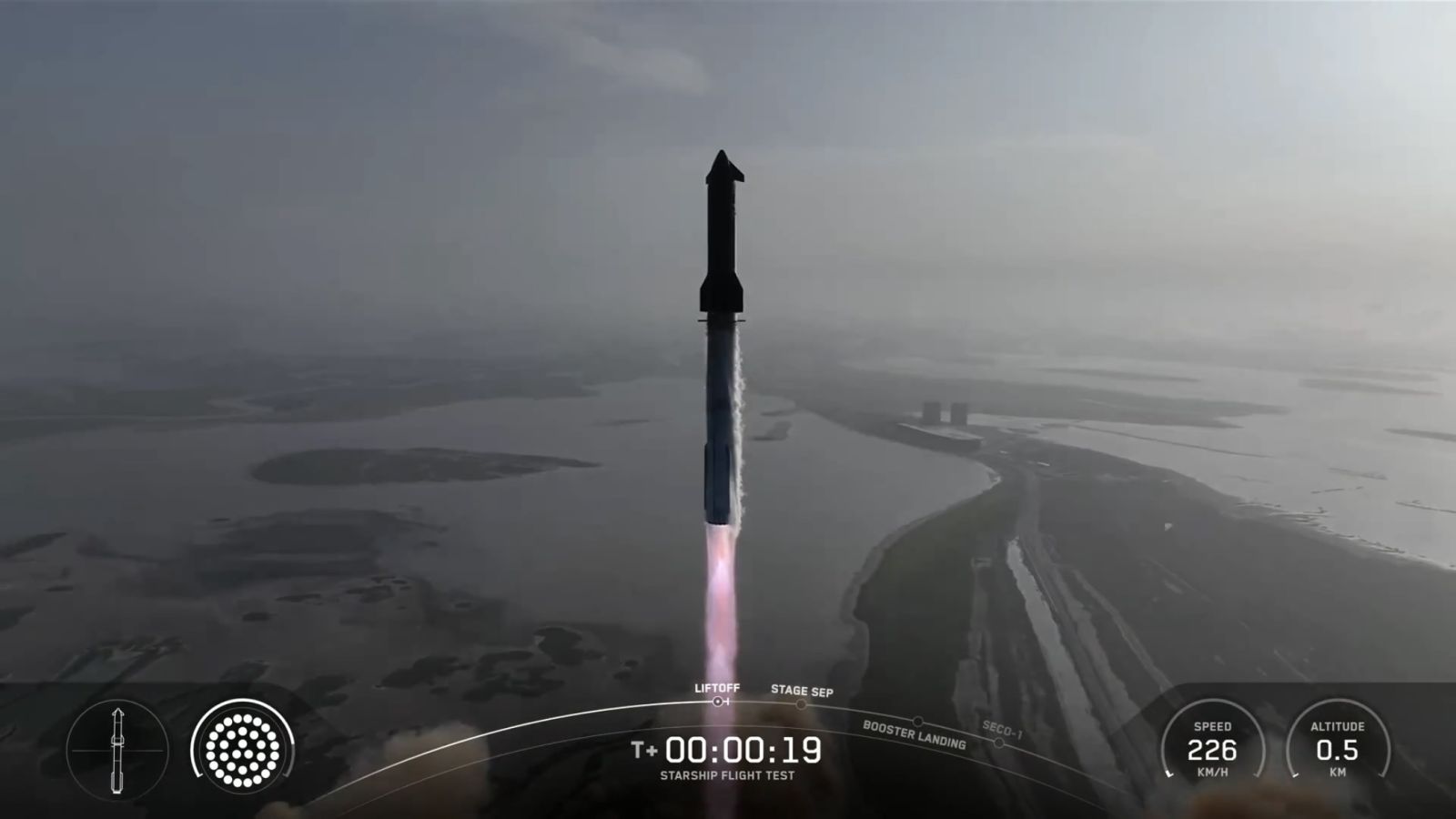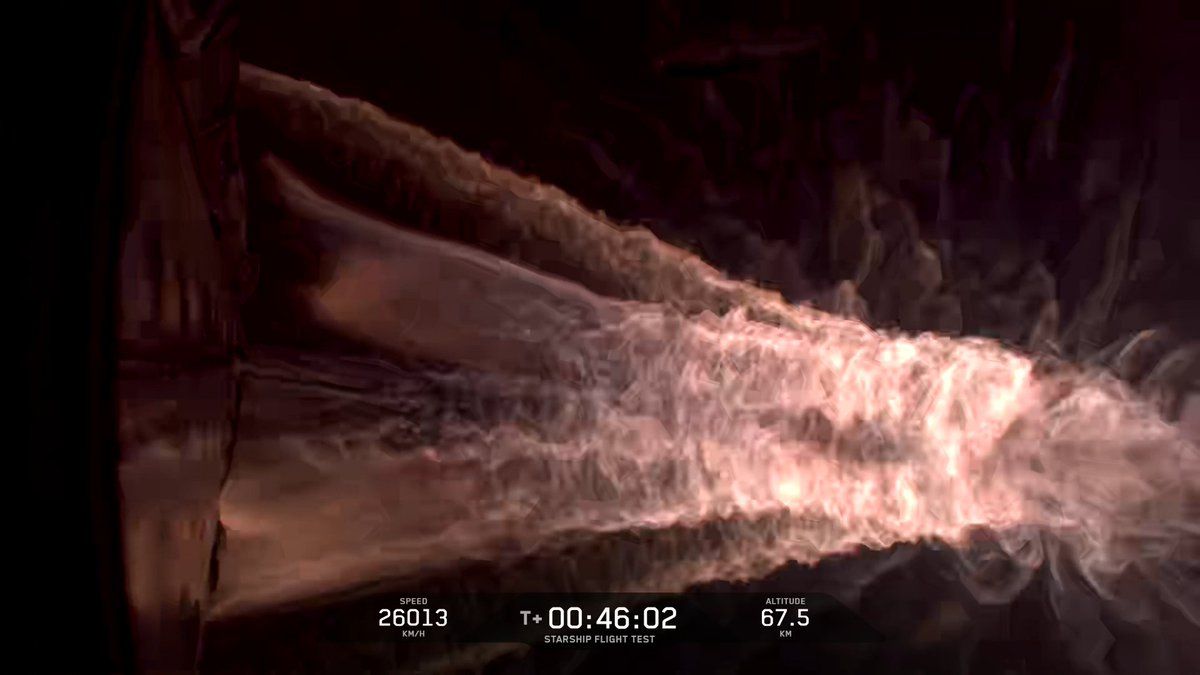Follow us on Google News (click on ☆)

As always with Starship, the liftoff was spectacular. The 33 Raptor engines of the Super Heavy B14 booster roared in unison, propelling the 394-foot-tall (120 m) structure into the Texas sky. This flight marked a first: the booster had already flown in January, a crucial step toward heavy launcher reuse. Stage separation proceeded smoothly, and the Starship, designated Ship 35, continued its trajectory toward space.
However, challenges soon emerged. The Super Heavy booster began its descent toward the Gulf of Mexico. According to the flight plan, it was to perform a controlled splashdown, but with a more aggressive reentry profile than previous flights for testing purposes. During the engine relight attempt for the final phase, an explosion occurred, resulting in the loss of the booster. Despite this setback, SpaceX considers this maneuver an opportunity to gather valuable data on the system's behavior under extreme conditions.
Meanwhile, as the spacecraft reached its intended orbital velocity, a fuel leak caused a loss of attitude control. Another failure followed: the payload bay door failed to open, preventing the deployment of the eight onboard Starlink satellite simulators. Without stability, the spacecraft began an uncontrolled spin, jeopardizing the mission.

The spacecraft, visible on the left of the image, engulfed in plasma during its uncontrolled atmospheric reentry
The Starship's condition rapidly deteriorated. Unable to correct its trajectory, it began an uncontrolled atmospheric reentry. At 46 minutes and 48 seconds after launch, telemetry was lost. Shortly after, the spacecraft disintegrated over the Indian Ocean in what SpaceX routinely refers to as a "rapid unscheduled disassembly."
Despite these setbacks, Elon Musk highlighted the progress made. He noted the absence of heat shield tile loss during ascent, a critical point for spacecraft reusability. Additionally, he announced an increased testing cadence, targeting launches every three to four weeks, supported by FAA approval for up to 25 annual launches from Starbase.
Spectators on-site, some having traveled great distances, expressed mixed feelings of awe and disappointment. For many, witnessing this launch fulfilled a childhood dream fueled by past space exploration achievements. Despite the flight's outcome, enthusiasm for space exploration remained undimmed, reinforced by the belief that each failure brings success one step closer.